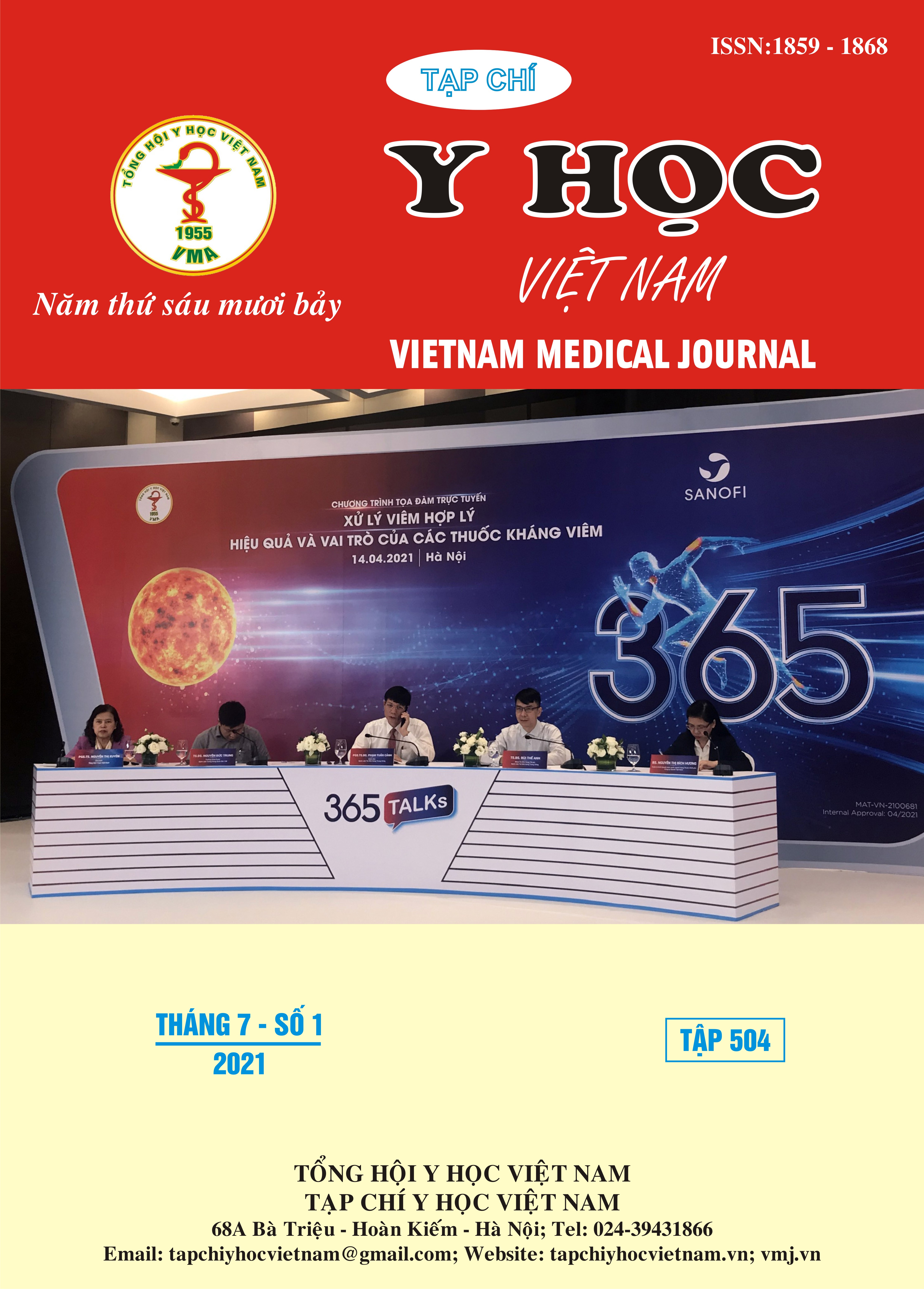COMPLICATIONS OF SURGICAL IRIDECTOMY AND LASER PERIPHERAL IRIDOPLASTY IN TREATMENT OF UNRESPONSIVE ACUTE PACG WITHOUT CATARACT
Main Article Content
Abstract
Objectives: To evaluate the complications of surgical iridectomy and argon laser peripheral iridoplasty for unresponsive acute PACG with cataract. Patients and Methods: 39 eligible eyes were recruited into the study from 3 centers Vietnam National Eye Hospital, Ha Dong Eye Hospital and Eye department of 103 Military Hospital from 1/2018 to 11/2019. Results: All of 39 eyes achieved good results with 100% IOP control after 1 year of follow-up. However, there was a number of complications that did occur. During operation, the rate of complications was 43,58%, including hyphema 25.81%, corneal burn 17,94 %, all of which were managed successfully in surgery and by medical treatment after surgery. Post operation, early complications (<2 weeks) 41.03% including: iris incarceration 5.13%, shallow anterior chamber 7.69%, elevated IOP 7.69%, anterior uveitis 20.51%. Late complications (>2 weeks) were cataract accounting for 2.56%. preoperative IOP higher than 35 mmHg led to a higher rate of post-operative hyphema (<0.001, Chi square test), anterior uveitis (0.04, Chi square test) compared with the preoperative IOP below 35mmHg. Duration of progression > 3 days was also associated with an increased risk of anterior uveitis (0.02, Chi square test), compared with the group with lasting less than 3 days. Shallow anterior chamber depth less than 1.5mm has higher rate of peripheral corneal burns when performing LIP (0.02, Chi square test) compared with the group with ACD of more than 1.5mm. Complications were mostly well controlled with additional treatments and did not affect surgical results after 12 months. Conclusion: Peripheral iridectomy combined with LIP is quite safe, although there was a certain rate of complications, but it were usually mild and can be easily managed without influence on final results.
Article Details
Keywords
ACAG, surgical iridectomy, laser peripheral iridoplasty, complications
References
2. Nongpiur ME, Ku JY, Aung T. Angle closure glaucoma: a mechanistic review. Curr Opin Ophthalmol; 22:96–101. 2011
3. Edmunds, B., et al. The national survey of trabeculectomy. III. Early and late complications. Eye 16.3: 297-303.2002
4. Playfair, T. JUSTIN, and PETER G. Watson. Management of acute primary angle-closure glaucoma: a long-term follow-up of the results of peripheral iridectomy used as an initial procedure. British Journal of Ophthalmology 63.1,17-22. 1979
5. Ritch R, Tham CC, Lam DS. Argon laser peripheral iridoplasty (ALPI): an update. Surv Ophthalmol. 2007; 52:279–88.
6. Ritch R, Tham CC, Lam DS. Long-term success of argon laser peripheral iridoplasty in the management of plateau iris syndrome. Ophthalmology; 111:104–8.2004
7. Lingam Vijaya, Panday Manish, George Ronnie, and B Shantha. Management of complications in glaucoma surgery. Indian J Ophthalmol, S131–S140.2011


